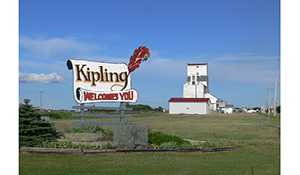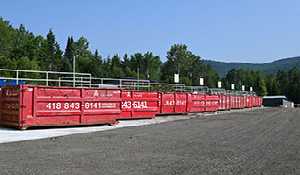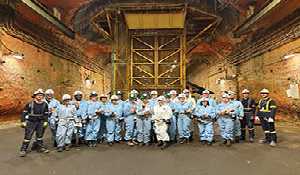Imagine if Amazon HQ2 effort had gone into pipelines
January 22, 2018, 3:07 pm

What if Canadian cities worked as hard to have Canadian pipelines approved as they did to attract Amazon.
Last week Amazon announced that Toronto is in the running for Amazon’s second headquarters. In a perfect world, with a strong and functional trade agreement that reflects the reality of how closely intertwined the Canadian and American economies are, this would be reason to celebrate.
In the current climate however, with Trump in the White House and NAFTA’s future uncertain, it’s hoping against hope that Amazon will incur Trump’s wrath by siting its second headquarters in Canada.
That didn’t stop Canadian cities from going all out to try to attract Amazon’s HQ2.
The City of Calgary emblazoned the sidewalks across from Amazon’s current Seattle headquarters with messages including, “Hey Amazon. We’d change our name for you. Calmazon? Amagary? Love, Calgary ;)” and hung a 30-metre banner outside saying, “we’re not saying we’d fight a bear for you, but we totally would.” The same message ran in a full-page ad the city took out in the Seattle Times.
Winnipeg’s bid included a video starring Blue Bomber Obby Khan and Mayor Brian Bowman showing off the city’s best features to Alexa, Amazon’s voice-activated system.
Ottawa and Gatineau were offering Amazon space in the 120-acre stretch of waterfront lands that are poised for development, 15 minutes away from Ottawa’s airport and close to policymakers.
Vancouver’s bid to host Amazon HQ2 focused on its proximity to the Amazon’s original headquarters in Seattle.
Halifax created a website mirroring Amazon’s fonts and buttons to claim that Halifax housing the headquarters would bring Amazon a savings of more than $10 billion over 10 years.
Sault Ste. Marie suggested employees could canoe to work. As surprising as it is, apparently that didn’t work.
Windsor partnered with Detroit to make its pitch to Amazon, which included connecting twin offices in each city with a cable car or gondola.
Montreal is already home to Amazon Web Services’ cluster of data services because of its competitiveness in the hydro-electric power arena, but was left off the short list.
Hamilton spent $467,000 to try to attract Amazon, but didn’t make the short list.
Now, can you imagine how different this country would be if those cities had lobbied the federal government as hard for pipelines and other major energy projects to get Canadian energy to markets and create Canadian jobs as they lobbied Amazon, the American company that is putting many Canadian retailers out of business with unfair tax advantages.
After almost a decade and more than $1 billion spent on planning and regulatory filings, four major Canadian oil-export pipelines remain unbuilt, leaving us with no choice but to sell our oil and natural gas to U.S. buyers far below world prices.
The Energy East pipeline would have created 14,000 jobs along its 4,500-kilometre route, invested more than $15.7 billion in construction and operations, added $55 billion to Canada’s GDP, and pumped $10 billion into federal and provincial coffers in the form of taxes.
While Montreal put a lot of money and effort into trying to attract Amazon to boost its own local economy, the city’s mayor worked against Energy East, which would have done far more for the Canadian economy.
How Montreal could have opposed Energy East, which would have safely transported oil to the east ern refineries, after the Lac Megantic disaster killed 47 people just 250 km east of Montreal showing how unsafe the alternative is, is incomprehensible.
And while Calgary of course supported Energy East, it was not with the passion of “We’d change our name for you” or “We’d fight a bear for you.”
The Pacific NorthWest LNG project in British Columbia had engaged more than 1,100 businesses and spent more than $5.5 billion on upstream investment and an additional $900 million on project development—before regulatory uncertainty killed the project. The total investment of $36 billion never materialized and is likely gone forever. Instead, a project is under way in Alaska to ship liquid natural gas to Asia.
And don’t forget the Northern Gateway pipeline, Kinder Morgan’s Trans Mountain expansion project, and the billions of dollars of cancelled or suspended investments across the oilsands and energy sector.
Imagine if all the work and effort and creativity that went into failed bids to attract Amazon’s HQ2 had gone into supporting Canadian pipeline and LNG projects to strengthen and grow the oil and gas industry—the largest contributor to our GDP?
We might be living in a very different country right now, with some of these projects actually under construction.
Canadians don’t need to look to Amazon, with its vast networks of warehouses with underpaid workers to save them. They need to support our own Canadian industries that create jobs, pay taxes, and make this country great.



































